It’s officially October which means it’s time to talk about horror films. A lot of horror films. Normally, we focus heavily on select horror reviews throughout the month while capping it off with a big feature on Halloween. In the past, we’ve covered franchises like Halloween and A Nightmare on Elm Street and, in 2019, we made a top 10 list of our personal favorite horror flicks. However, we’ve decided to do something a little different this year. Instead of our normal output, we’re going to take on a much larger task in releasing mini reviews daily for the entire month of October!
Every year, there are countless films that we just aren’t able to squeeze in among the chosen few that get reviewed on the site and it always feels as if there needs to be a reason for choosing said films. This year’s undertaking allows us to put less focus on a select few films and instead curate a larger collection of titles that horror fans should see. Now, this compilation isn’t just going to be a “greatest hits” or a history of horror. You can find those anywhere. Here, you’ll find classics, new favorites, cult films, multiple subgenres of horror, and, of course, the essentials. That being said, cuts still had to be made out of our initially massive list so there will be some big omissions. The cuts that were made were solely to create a more diverse and interesting group of films. In addition, the list isn’t in any particular order. Again, the idea is to be as diverse and unpredictable as possible with the picks. We don’t want anyone to know what’s coming next.
Make sure to check back here daily (or on our Facebook page) for each new entry! Without further ado, let’s get to the choices! Welcome to Cinema Smack’s 31 Days of Horror!
October 1st: Scream (1996)
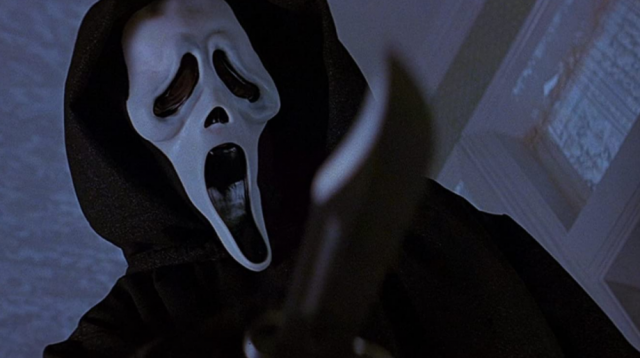
Perhaps not the most conventional starting point but it actually makes a ton of sense. In typical horror fashion, Wes Craven’s Scream sees a masked killer instilling fear into the town of Woodsboro. High school student, Sydney Prescott (Neve Campbell), emerges as the killer’s target a year after her own mother’s murder. The killer continuously terrorizes Sydney via phone calls, stalking, and attacks while she must decide which of the people in her life she’s able to trust.
Scream is a horror film that’s entirely fixated on the genre it belongs to. Coming from the horror master, Wes Craven, there are countless nods and homages to other films (including his own). It’s no surprise, then, that the film has been spoofed time and time again, specifically in the Scary Movie franchise, because of this. While it’s true that Scream doesn’t particularly age well with its dated technology, often cringeworthy script, and lack of originality, it’s still a monumental film in the genre. By the time of its release in 1996, the slasher subgenre was mostly dead with horror stalwarts like Jason Voorhees and Freddy Krueger being mercifully killed off in their respective franchises. Though, Scream reignited interest in slashers with new films like I Know What You Did Last Summer and Urban Legend following suit. It even spawned three sequels with another planned for release in 2022.
With its young cast consisting of up and coming stars like Campbell, Drew Barrymore, Courteney Cox, David Arquette, Skeet Ulrich, Jamie Kennedy, and Rose McGowan, a noteworthy soundtrack, and an iconic new killer to promote and, ultimately, exploit, Scream was a slasher flick for a new generation. Its self aware nature and Generation X swagger breathed new life into the horror genre even though its roots were set firmly in the genre’s past. It even established the now well known “rules” that every horror movie abides by. Scream is a postmodern horror classic and a perfect way to kick off our 31 Days of Horror.
October 2nd: Psycho (1960)
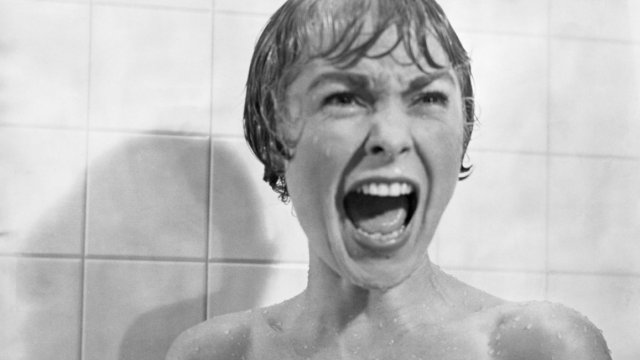
For day two of our 31 Days of Horror, we go from a film that reinvigorated the slasher subgenre to one that basically pioneered it. Alfred Hitchcock’s Psycho begins with young secretary Marion Crane (Janet Leigh) embezzling $40,000 from her employer’s client in hopes of starting a new life with her boyfriend, Sam Loomis (John Gavin). After ducking a suspicious police officer, Marion decides to stop and spend the night at the Bates Motel due to a rainstorm. Here, Marion meets the awkward but charming owner of the motel, Norman Bates (Anthony Perkins). After overhearing an argument between Norman and his invalid mother, Marion and Norman have dinner where Marion ultimately decides to return the stolen money. However, strange things are afoot at the Bates Motel and Marion may not get a chance to atone for her mistakes.
Simply put, Psycho is essential viewing for not just horror fans but for everyone. So if you haven’t seen it, shame on you. Based on the novel of the same name by Robert Bloch, the film was really ahead of its time and director Alfred Hitchcock was insistent on making it. He financed the film himself after Paramount Pictures refused to back the project and it obviously paid huge dividends as Psycho became one of Hitchcock’s most iconic works. The film spawned three sequels with Anthony Perkins reprising his role as Norman Bates in each of them. 1998 brought Gus Van Sant’s universally hated shot-for-shot remake with funnyman Vince Vaughn being miscast in the lead role. Most recently though, A&E produced five seasons of the contemporary prequel series Bates Motel which was surprisingly very good.
When it comes to legacy, Psycho is, without doubt, one of the greatest horror films ever made and also one of the most influential. Again, it basically laid the groundwork for the slasher films of the 1970’s and 1980’s. Some may argue that Michael Powell’s Peeping Tom is more influential as it delves into traditional slasher tropes a little more than Psycho does. With both films being similar in subject matter as well as being released the same year, it’s kind of up to personal preference here. For our money though, Psycho is the overall better film and most certainly the bigger success story of the two. The legendary performance from Anthony Perkins, the amazing twist ending, Bernard Herrmann’s piercing score, and Janet Leigh’s iconic shower scene all make Psycho a must watch during Halloween season.
October 3rd: Carrie (1976)
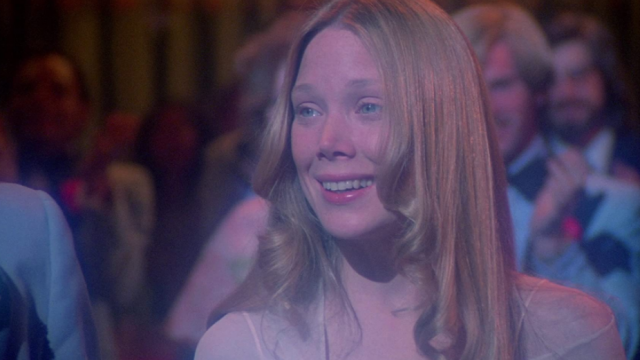
Hell hath no fury like a woman scorned. This is especially true when said woman is the subject of one of horror master Stephen King’s best novels. Brian De Palma’s underrated 1976 horror masterpiece, Carrie, follows a teenage girl through her sheltered and abusive life in the lead up to her senior prom. Carrie White (Sissy Spacek) is a shy and misunderstood girl transitioning into womanhood (literally) to the laughs and jeers from her classmates. The film opens with her having her first period while showering after gym class. Due to her religiously oppressive mother, Margaret (Piper Laurie), Carrie is not prepared to face the natural changes her body is going through. Given the oppression and constant teasing from her peers, Carrie also discovers she has telekinetic powers. However, things start to turn around for the young woman as she’s asked to the prom by the popular Tommy Ross (William Katt), at the behest of his actual girlfriend, Sue Snell (Amy Irving). Intending on extending an olive branch and giving Carrie a nice evening, the senior prom unexpectedly turns into something else entirely.
Whether or not you’ve seen Carrie, most of you probably already know what happens. Yet, we’re not going to spoil the film here for anyone that maybe doesn’t know the ending. Nonetheless, this film is simply amazing. It may seem strange to call Carrie “underrated” but it really is. When most people think of horror, their minds go to films like The Exorcist and The Shining or to popular slashers like Halloween and Friday the 13th. While it’s held in high regard, Carrie just feels like a film that isn’t talked about among casual audiences as much as it should be. It sometimes feels like a forgotten classic instead of one of the many enduring ones. The film has spawned a sequel, a made-for-television remake, and a theatrical remake in 2013 with Chloë Grace Moretz in the title role. Though, none of these even come close to reaching the heights of the original De Palma feature.
What makes Carrie so exceptional is in its treatment of the title character. We all remember the people like Carrie White, the kids that were teased and bullied for absolutely no reason, from our own experiences in high school. De Palma’s film flips the script and shows the bullies and onlookers how their behavior and/or negligence affects the victim. Sissy Spacek is so damn good in the film and even landed a Best Actress Oscar nomination for the role. She’s so innocent and likable that viewers will be truly appalled by how she’s treated. Then, given the domineering presence of her crazed mother, Margaret, we understand that Carrie never stood a chance in this world. Similarly to Spacek, Piper Laurie landed an Oscar nom herself in the Best Supporting Actress category. Carrie horrifies viewers with the nightmare of adolescence combined with mistreatment and repression to create something truly monstrous. The hellish prom scene is one of the best sequences in any horror film ever and maybe in all of cinema. Horror fans definitely shouldn’t sleep on Carrie as it’s one of the best ever.
October 4th: Hellraiser (1987)
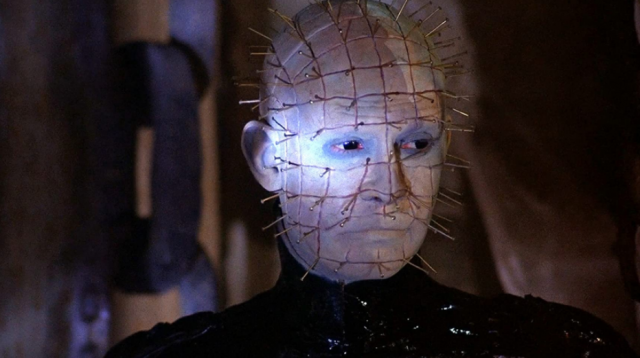
If you’ve been following the site for any length of time, you know that we never shy away from talking about this one. Hellraiser begins with pleasure seeker Frank Cotton (Sean Chapman) solving a puzzle box that opens a metaphorical doorway to pain and suffering unlike any other. A quartet of demons (or angels to some), known as the Cenobites, arrive to take Frank to Hell. From here, Frank’s brother, Larry (Andrew Robinson), and his wife, Julia (Clare Higgins), move into the house where Frank met his demise. Following a minor accident, Larry’s blood drops on the floor and resurrects a skinless version of Frank (Oliver Smith). Julia, who had an affair with Frank in the past, aids him by bringing men for Frank to “feed” on and regain his strength. The only thing standing in way is Larry’s daughter, Kirsty (Ashley Laurence), who discovers Frank and eventually makes a deal with the Lead Cenobite (Doug Bradley), more affectionately known as Pinhead, to return Frank to them.
Hellraiser landed at #1 on Cinema Smack’s Top 10 Favorite Horror Films feature last October and with good reason. It’s one of the most original, disturbing, and cerebral horror films certainly of the 80’s and maybe ever. There just isn’t really anything else like it. The film is actually an adaptation of Clive Barker’s novella, The Hellbound Heart, with the twist being that Barker himself writes and directs the film version as well. Barker understands the tone of his story better than anyone and he perfectly translates it to the screen. While horror films often create a monster for a hero character to overcome, Hellraiser‘s human characters are the monsters. Frank and Julia do unspeakable things all in the name of lust while the innocent are punished. Obviously, the Cenobites are monstrous in appearance but they’re really only there to keep the balance and collect what’s owed to them. This is something that most of the sequels tended to forget with Hellbound: Hellraiser II the only one that really keeps the spirit of the original.
Now, we can’t end this without talking about Pinhead. Unsurprisingly, he became the face of the Hellraiser franchise and the sole focus for the first four films. Once the direct-to-DVD sequels started to come out, though, fans would get less and less of the head Cenobite with his appearances being mere cameos. Regardless, Doug Bradley is otherworldly as Pinhead with his commanding voice, gothically regal presence, and eerily calm menace. Again though, he only appears to collect the souls promised to him. With other horror icons like Freddy Krueger, Jason Voorhees, and Michael Myers achieving pop culture status, Pinhead is one that deserves far more attention than he gets. He’s a different kind of horror character just as Hellraiser is a different kind of horror movie.
October 5th – Henry: Portrait of a Serial Killer (1986)
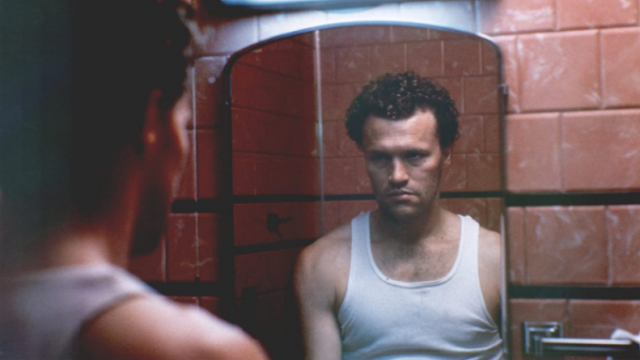
Today, we go from one disturbing film to another but for different reasons. John McNaughton’s first narrative feature, Henry: Portrait of a Serial Killer, was born out of a failed wrestling documentary in which the finances for that film were used for a horror feature. follows the titular Henry (Michael Rooker) as he goes on a murderous rampage throughout the slums of Chicago. Henry, a drifter, settles into a scummy apartment with his equally vile friend, Otis (Tom Towles), and Otis’s virtuous sister, Becky (Tracy Arnold). Henry’s bloodlust soon extends to Otis and the two embark on their brutal killing spree with reckless abandon.
There’s not really much else to say about the plot of Henry. Two unsavory individuals stalk, rape, and, of course, kill people simply because they want to do it. The inspiration for the film came from convicted serial killer Henry Lee Lucas and his supposed cross country series of murders with Ottis Toole. The film is a fictional account of the events as Lucas’s murderous claims are mostly regarded as false confessions at this point.
Still, the true horror of Henry: Portrait of a Serial Killer comes from its depictions of murder and the sadistic side of human nature. With its inspiration stemming from real life convicted killers, McNaughton doubles down by making this fictional piece feel as real as possible. With both Henry and Otis often filming their crimes, there’s an added realism that complements the gritty documentary style of the film itself. Initially premiering at the Chicago International Film Festival in 1986, Henry was slapped with an X rating, typically reserved for pornographic films, because of its realistic violence and subject matter. Brutal serial killers like Ted Bundy, John Wayne Gacy, the BTK Strangler, and more had terrorized their respective communities prior to the film’s release and perhaps Henry was just a little too close for comfort in its execution. Regardless, the film eventually rose to cult status and continues to perturb viewers to this day. Henry: Portrait of a Serial Killer is a realistic take on serial killers in a genre that has largely sensationalized them. For that, it’s in a class of its own in the horror ranks.
October 6th: Saw (2004)
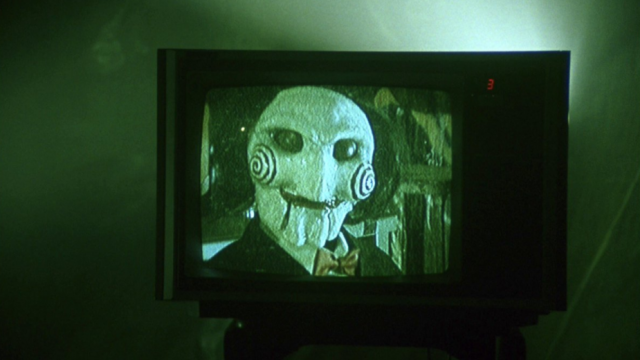
For our next entry, we go from the sadistic side of humanity to the desperate side. James Wan’s massively successful 2004 debut, Saw, sees an unknown serial killer, dubbed Jigsaw, testing his victims and their will to live by putting them into deadly, personalized games. Two men awake chained in a dilapidated bathroom with a dead man in the center of the room. Both Adam (Leigh Whannell) and Dr. Lawrence Gordon (Cary Elwes) must communicate and aid one another if they’re going to figure out who abducted them and escape what could be their eventual tomb.
Premiering in January 2004 at the Sundance Film Festival, Saw received a very positive reaction. Originally intended for a direct-to-DVD release, the reaction caused a change of course and the film was released during Halloween of that year instead. Though critics were mixed on the film, Saw became the most profitable horror film since 1996’s Scream and the rest, as they say, is history. Yearly sequels were released through 2010 culminating in Saw: The Final Chapter. Yet, like so many other horror franchises, the 2010 installment wasn’t the final one after all. 2017 gave us whatever the hell Jigsaw was and a new film within the same universe, Spiral, was set for release this past May before the film was pushed back a year due to the COVID-19 pandemic.
In 2020, many people consider the Saw franchise something of a joke which is fair given the annual releases, increasingly convoluted story, and absurdity of each film’s death traps. What people often forget, though, is how good the first film really is. Jigsaw’s games are vile in nature but there’s a survivalist spin on all of them. Somewhere, his targets have lost their way and Jigsaw aims to purge out those who are unappreciative of the life they’ve been given. It’s just such a different approach than the typical horror fare and it obviously resonated enough back in 2004 to turn the series into a nearly $1 billion franchise. Along with Eli Roth’s Hostel, Saw is largely known as a pioneer of the “torture porn” movement in the horror genre. That being said, this first film is quite mild with only a handful of graphic, but extremely effective, scenes featuring gore. Instead, the film focuses more heavily on mystery, suspense, and revelation for many of its thrills. For those out there that scoff at the inclusion of Saw on this list, forget what you know about the sequels and revisit this mid 2000’s gem to see where it all began.
October 7th: Invasion of the Body Snatchers (1978)
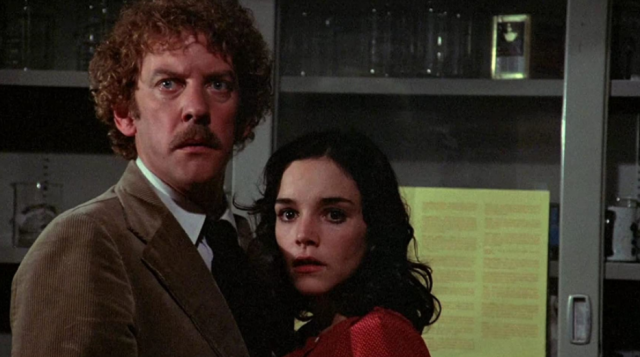
As is the case with different genre pairings such as crime thrillers and romantic dramas, the union of science fiction and horror is a match made in heaven. Over the course of film history, there have been countless classic sci-fi horror films from all decades. Whether it’s Frankenstein, John Carpenter’s The Thing, or the subject of today’s 31 Days of Horror entry, the marriage of sci-fi and horror continues to withstand the test of time. Directed by Philip Kaufman, Invasion of the Body Snatchers sees an alien species in the form of strange seeds abandon their home planet and land in San Francisco. Two employees at the San Francisco Health Department, Matthew Bennell (Donald Sutherland) and Elizabeth Driscoll (Brooke Adams) begin to notice odd changes in the city’s population after Elizabeth has an inkling that her boyfriend, Geoffrey (Art Hindle), may not be himself. Soon after, they discover mysterious pods that are creating emotionless duplicates that are taking the place of humans.
Not only is the film an adaptation of Jack Finney’s 1955 novel, The Body Snatchers, but it’s also a remake of the 1956 film with which it shares its name. There have also been two additional remakes since the 1978 version with 1993’s Body Snatchers and 2007’s The Invasion. Although the idea is original, there are certainly echoes of this particular story throughout many other horror releases over the years. Something like David Cronenberg’s Shivers surely had to have taken influence from the 1956 film just as Carpenter’s They Live bears some resemblance to the 1978 film. No matter which version of Body Snatchers is your favorite, it’s safe to say that this is a story that has persevered and adapted while firmly carving out a legacy for itself in popular culture.
Kaufman’s Invasion of the Body Snatchers came at an interesting time for sci-fi horror films as it’s in between the “science gone wrong”/creature features of the 50’s and 60’s and the body horror/gross out flicks of the 80’s. Because of this, the film is probably more in line with something like Rosemary’s Baby or The Shining for its auteurist approach. Distressing things happen but Kaufman employs a deliberate slow burn throughout the film that keeps viewers invested in the story and characters instead of overloading them with blood and guts like so many horror films do today. This was common in films of the 1970’s and, in that regard, it’s no surprise how many of them have remained in the public eye all these years later. The only thing that really holds Invasion of the Body Snatchers back from being an undisputed classic is its impressive amount of peers. Released the same year as horror staples such as Halloween and Dawn of the Dead and only a year or two before titles like Alien, The Amityville Horror, Friday the 13th, and The Shining, Invasion of the Body Snatchers often gets lost in the shuffle. Nonetheless, it’s definitely one to check out for those that haven’t seen it or for anyone looking for a good piece of classic sci-fi horror.
October 8th: Oculus (2013)
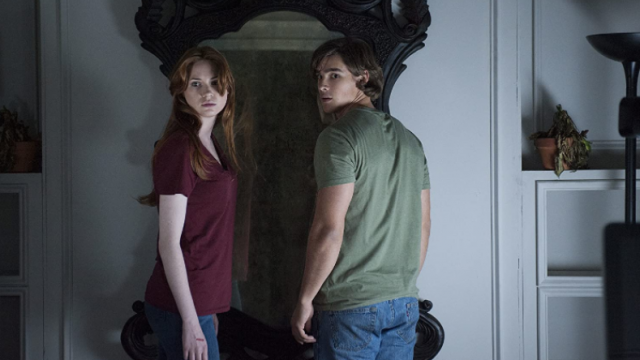
Given the fact that all of the films discussed up to this point are over fifteen years old, you may be wondering if there’s been anything good to come out of the 2010’s. In the past few years alone, there have been some fantastic films released such as It, A Quiet Place, Ready or Not, and Color Out of Space with each having something special to offer horror fans. For today’s entry, though, we’re going back to 2013 with Mike Flanagan’s Oculus. The plot is juggled between two time periods: 2002 and, at that time, modern day 2013. In 2002, the Russell family, consisting of Alan (Rory Cochrane), Marie (Katee Sackhoff), Kaylie (Annalise Basso), and Tim (Garrett Ryan), move into a new house. However, tensions arise in the household with Alan soon becoming distant and on edge while Marie suffers through a bout of depression. All of the family’s issues seem to come from a large, mysterious mirror hanging on the wall of Alan’s office. Ultimately, Alan murders his wife with young Tim avenging his mother by killing his father. Fast forward to the present day where 21-year-old Tim (Brenton Thwaites) is released from a psychiatric hospital and 23-year-old Kaylie (Karen Gillan) tracks down the mirror which had gone missing. Kaylie recruits Tim to help her destroy the mirror once and for all by returning to the empty family home and subverting the mirror’s supernatural influence with the help of technology, routine, and reminders.
Oculus is something of an odd combination of ideas in that it’s part supernatural horror but also part mystery and part ghost story. It differs from a film like Carrie in that there isn’t a specific person to blame or an inciting incident to lead the characters down these dark paths. The monster of the film is an inanimate object which will always allow viewers to question the reliability of the film’s characters. Is a haunted mirror at fault or is there some kind of trauma that causes these characters to pin their problems on said mirror? The film relies mostly on eerie visuals, flashbacks, and misdirection to creep out the audience as well as adult Kaylie and Tim. Then, there’s the typical haunted house fare with mysterious entities bending the human characters to their will.
Adapted from a short film also by Mike Flanagan, Oculus was something of a coming out party for the filmmaker. For those who’ve stayed up to date on all things horror in recent years, Flanagan’s name should ring a bell. Since his work on Oculus, Flanagan has enjoyed a successful partnership with Netflix with his films Hush, Before I Wake, and Gerald’s Game all landing on the streaming giant. In addition, he created the wildly successful show, The Haunting of Hill House, and its follow-up series, The Haunting of Bly Manor (set for release tomorrow), as well. Last year, Flanagan helmed Stephen King’s Doctor Sleep which was a box office disappointment despite being well reviewed. Over the course of his career, Flanagan has displayed an understanding and appropriate execution of the horror genre that had seemingly been lost on many modern filmmakers. He doesn’t rely on gore or body count but instead focuses on mood, atmosphere, and legitimate thrills. These are things that Oculus has in abundance. Couple this with an originality that just wasn’t seen that often in the late 2000’s/early 2010’s and Oculus is easily one of the standout horror titles in the first half of the decade.
October 9th: Opera (1987)
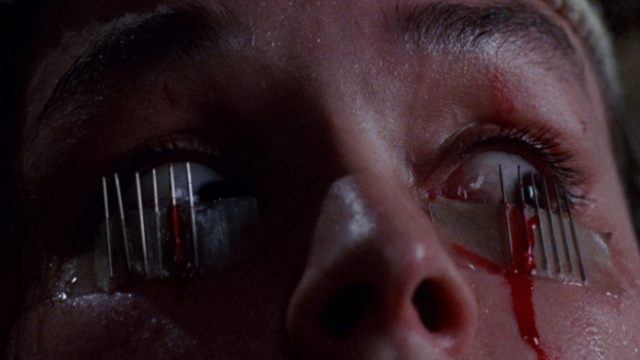
Thus far, we’ve spotlighted a number of popular films over six decades of horror filmmaking. As originally stated in the introduction to our 31 Days of Horror feature, we don’t want to only focus on “greatest hits.” That being said, our pick for today is from a legendary horror director but it’s not his most notable work. Italian filmmaker Dario Argento’s 1987 film, Opera centers on Betty (Cristina Marsillach), a young opera singer who gets the opportunity to play Lady Macbeth when the opera’s star is injured. Betty is initially hesitant because of an unlucky curse surrounding the play but agrees to take over the role. Soon, Betty is stalked by a deranged fan who forces her to watch him murder her associates in an attempt to stake his claim on her for himself.
The usual go-to when it comes to Argento films is 1977’s Suspiria which lands on horror “best ofs” on a regular basis. We actually already featured the film on this site almost four years ago to the day with its own full review where we described Suspiria as being mostly style over substance. The story left a lot to be desired but it’s the film’s striking visuals and gore that keep you coming back for more. In a way, Opera is similar in that respect but the overall story is also much better than Suspiria’s. The mystery behind Betty’s stalker, though somewhat predictable, is intriguing and the attacker’s heinous acts are truly a spectacle. As Betty is bound and pins are taped beneath her eyes forcing her to keep them open, the film invokes a sense of dread and helplessness that’s not always as effective as it is here.
Where Opera really excels though, is in Argento’s filmmaking prowess. Overall, the film is much more traditional looking than something like Suspiria but Argento proves himself to be a master filmmaker here. The camerawork is simply astounding with its smooth and lengthy tracking shots, hypnotic bird’s eye view angles, and claustrophobic close ups. The jarring transitions from opera music to 80’s heavy metal are noteworthy as well in that they mirror the severe mood changes when Betty’s stalker appears. Italian giallo films like Blood and Black Lace and The Bird With the Crystal Plumage from filmmakers like Mario Bava and, of course, Argento, were huge influences on the slasher subgenre. With the release of Opera well into the 1980’s, Dario Argento showed that he could still deliver in a genre that has often left filmmakers behind. While the film may not be the director’s most recognizable release, it easily remains one of his best.
October 10th: Rosemary’s Baby (1968)
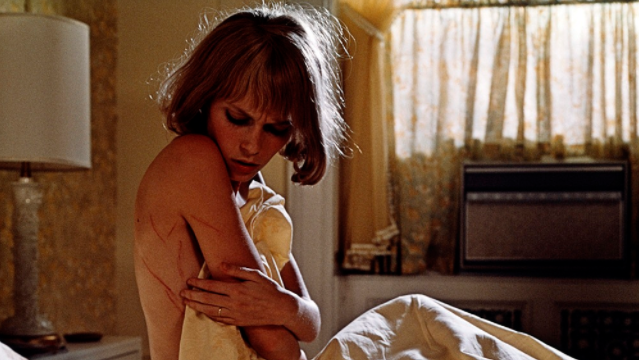
For this entry, we jump from one legendary filmmaker to another as we take on probably the least horrific film that you’ll find on this list. Roman Polanski’s Rosemary’s Baby centers on the titular Rosemary Woodhouse (Mia Farrow) moves to a new apartment building with her husband, Guy (John Cassavetes). They’re welcomed into their new home by new neighbors, the overly friendly, yet strange, Roman (Sidney Blackmer) and Minnie (Ruth Gordon) Castavet. While Guy strikes up a friendship with Roman, Rosemary quickly becomes annoyed by their constant interference in their lives. Eventually, Rosemary becomes pregnant and the Castavets take it upon themselves to insert themselves into that as well. Over the course of her pregnancy, Rosemary becomes sickly in appearance and fears that something is terribly wrong. In addition, she’s clued into the possibility that she may be in the presence of a satanic coven that wants her baby.
In addition to some masterful filmmaking from Polanski, the thing that really sets Rosemary’s Baby apart from other horror films is its character work. You’d be hard-pressed to find any horror film that has a better cast of characters than this one. Mia Farrow is excellent as the mild mannered and easily coaxed Rosemary. Her complete psychological breakdown is uncomfortable to watch and you genuinely feel bad for not only the character but for Farrow herself. John Cassavetes is severely underrated as both an actor and filmmaker in the fact that most casual audiences don’t know who he is. He’s despicably likable as Guy whose career and friendship with the Castavets is more important than the health and well being of his own wife. However, Sidney Blackmer and Ruth Gordon are probably the most memorable characters of the entire film with their colorful clothing, invasive actions, and odd behavior making their scenes uneasy for viewers. Gordon even won a Best Supporting Actress for her work on the film.
While we stated that Rosemary’s Baby is perhaps the least horrific film in our 31 Days of Horror, that doesn’t mean that there’s nothing to fear. The film is most certainly a work of horror but with a psychological arthouse flair. There’s a constant sense of dread as Rosemary is bullied, mistreated, and micromanaged throughout her entire pregnancy. She’s not allowed to make any choices for herself even if they seem to be the best way to go for a successful pregnancy. The physical pain and mental anguish she suffers through are real-life fears for new and expecting mothers and Polanski does a phenomenal job accentuating them throughout the film. This is even without the threat of a coven potentially staking a claim on her unborn child. Due to the characters, relatable real-life issues, and the torment suffered by the lead character, Rosemary’s Baby is an unforgettable experience from a top tier filmmaker.
That’s it for Part 1 of our 31 Days of Horror! Click here for Part 2!

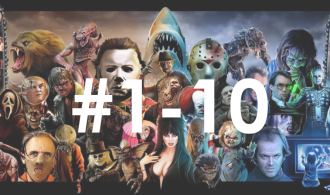
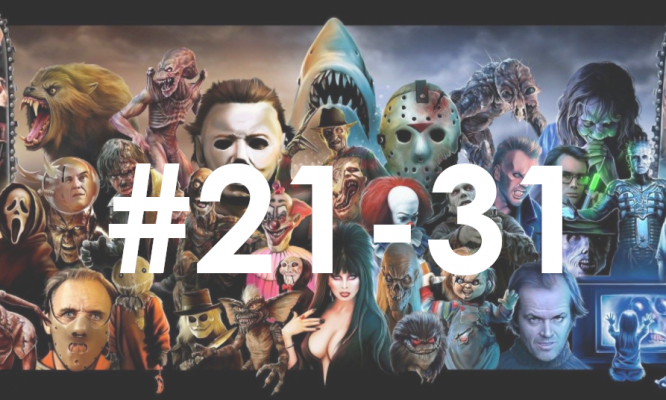
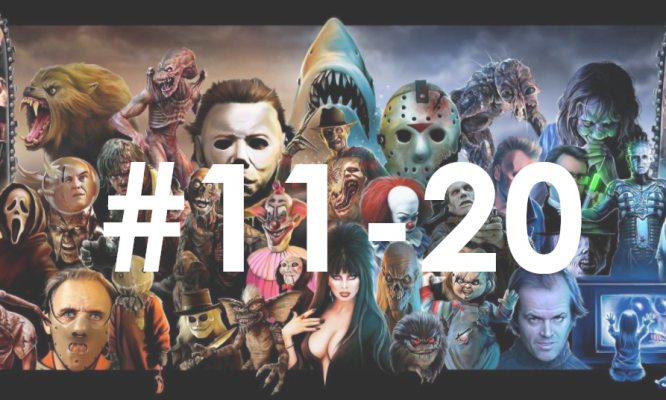
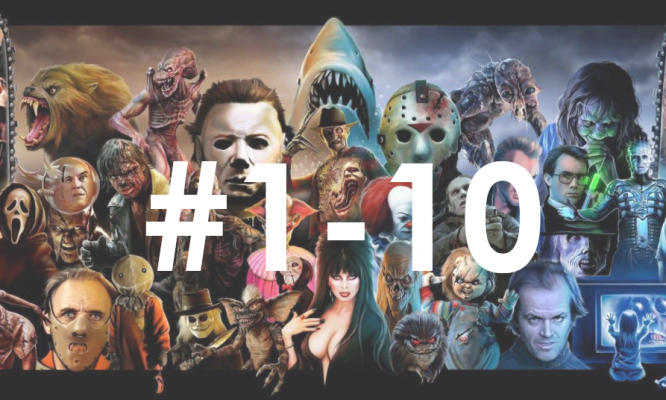
[…] Welcome to Part 2 of Cinema Smack’s 31 Days of Horror! If you’ve yet to read Part 1, you can do so by clicking here. […]
[…] Smack’s 31 Days of Horror! If you haven’t been following, you can catch up with Part 1 here and Part 2 […]